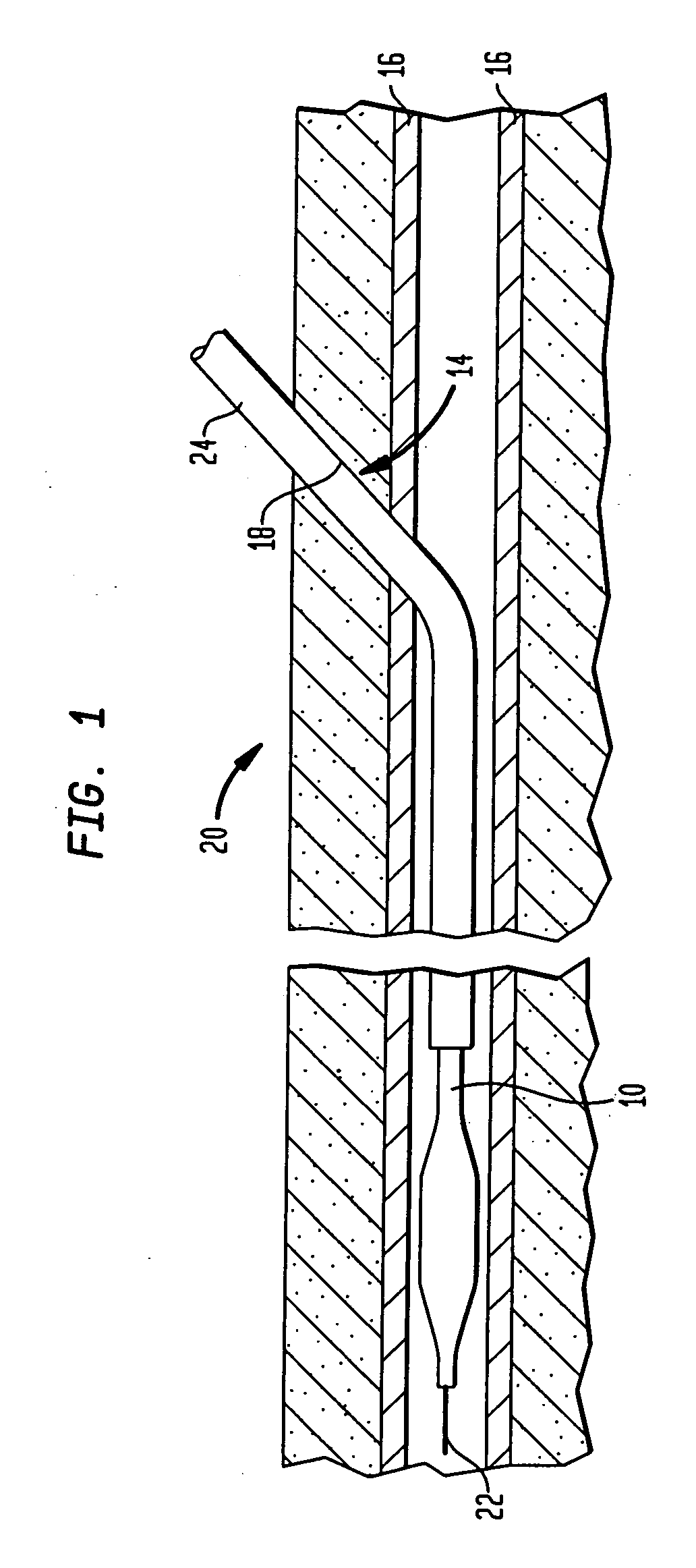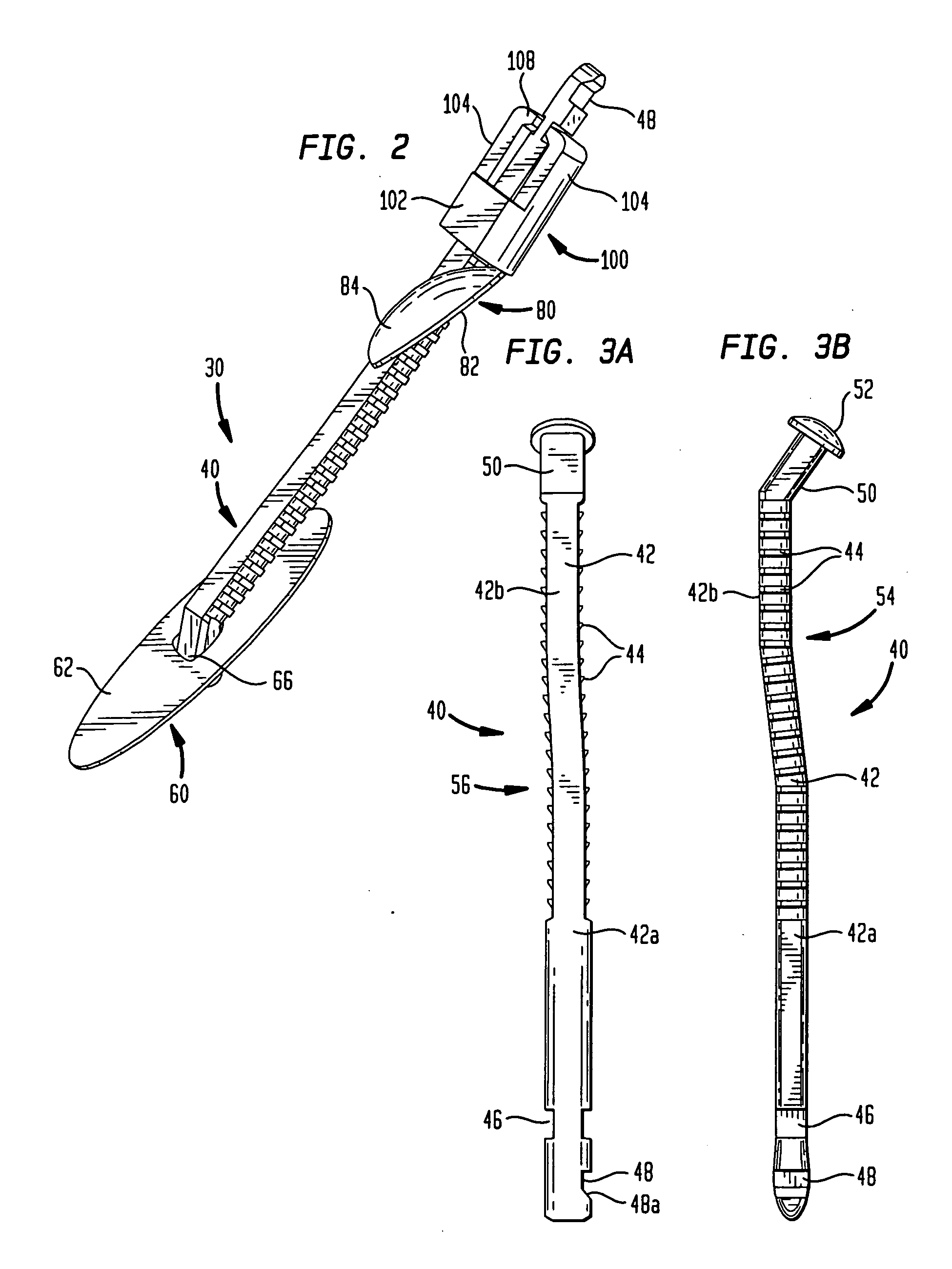Vascular hemostasis device and deployment apparatus
a hemostasis device and hemostasis technology, applied in the field of vascular hemostasis devices and deployment apparatuses, can solve the problems of prolonged personal attention of healthcare professionals, prone to reopen unexpectedly wound closures, and pain in the procedur
- Summary
- Abstract
- Description
- Claims
- Application Information
AI Technical Summary
Benefits of technology
Problems solved by technology
Method used
Image
Examples
Embodiment Construction
[0047]In certain procedures, for example, intra-aortic balloon pumping (“IABP”), percutaneous transluminal coronary angioplasty (“PTCA”) and angiography, as best seen in FIG. 1, a catheter or other medical device 10 is inserted into a blood vessel or artery 16, typically using what is commonly known as the Seldinger technique. In accordance with this technique, a hollow needle (not shown) is inserted through the skin into the blood vessel or artery 16, most frequently the common femoral artery in the groin area of the patient's leg 20, thereby creating a puncture wound 14. Puncture wound 14 includes a tissue channel 18 extending through a layer of tissue separating blood vessel 16 from the patient's skin. A guide wire 22 is then inserted through the needle and advanced to the desired area. Keeping the guide wire 22 in place, the needle is removed and discarded. A dilator / insertion sheath set is then advanced over the guide wire and inserted into the blood vessel to dilate the punctu...
PUM
 Login to View More
Login to View More Abstract
Description
Claims
Application Information
 Login to View More
Login to View More - R&D
- Intellectual Property
- Life Sciences
- Materials
- Tech Scout
- Unparalleled Data Quality
- Higher Quality Content
- 60% Fewer Hallucinations
Browse by: Latest US Patents, China's latest patents, Technical Efficacy Thesaurus, Application Domain, Technology Topic, Popular Technical Reports.
© 2025 PatSnap. All rights reserved.Legal|Privacy policy|Modern Slavery Act Transparency Statement|Sitemap|About US| Contact US: help@patsnap.com



